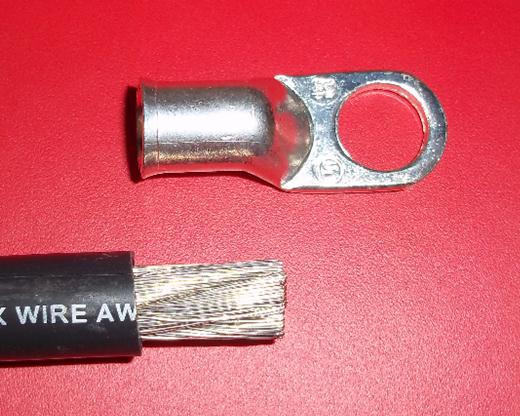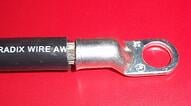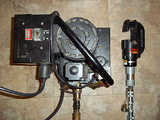Electrical connectors are classified by conductor configuration, size, and attachment method. Compression Connectors are connectors which are "attached" to conductors with the use of compression tools and dies. Other attachment options are solder,mechanical capture, and pin-connection.
Compression Connectors and compression attachment are chosen when conductivity and secureness of conductor performance requirements are high. That is, compression connection, by virtue of compressing the conductor and cable within constrained crimp die geometry produces a connection which approaches most closely the conductivity and tensile strength of the conductor. UL, ANSI, SAE and other electrical performance specifications are categorized by attachment method, hence UL486A or ANSI C119 pertain to compression connectors only. Compression connector performance criteria center upon conducitivity, resistance, heat rise and secureness, tensile, ratio to conductor strength values.


Compression is typically performed with a source of compression and crimp dies which are sized to constrain the conductor and connector to maximal bonding. "Homogeneous" compression is achieved when all of the "spaces" between strands and connector surfaces are eliminated created one homogenous cross-section. Compression Tools can be manual, hydraulic, or battery powered. Generally, they force dies to reduce the containing space of conductor and cable toward homogeneity. The size and stranding configuration of conductors determines whether less powerful manual or more powerful hydraulic and battery powered crimp tools are needed. Battery operatored crimp tools are more convenient and compact than hydraulic tools, because the power source is compact and integrates to the tool body.

Crimp dies are typically configured by crimp tool manufacturers, engineered to produce best compression results for the manufacturers crimp tool and connectors. They can be hexagonal or radial or "ball-cup" in shape; that is the containing space that the crimp die produces is configured with one of these shapes to maximize performance of that manufacturer's connectors and the customer application.
ASK Products' Connectors, Terminals, Butt Splices, Full Tension and Partial Tension Splices, Service Entrance Splices, Pin Connectors are all produced to perform with all of the crimp tool and crimp die manufacturer's products to specific performance criteria, like UL486 and ANSI C119. ASK connectors allow the end user to "seamlessly substitute" a wide variety of crimp tools/dies available on the market to achieve performance results. ASK will recommend the tool and dies to be used with specific cables and connectors. ASK provides maximum flexibility and confidence that the compression connection components are properly selected.



 1674 Frontenac Rd | Naperville, IL 60563
1674 Frontenac Rd | Naperville, IL 60563